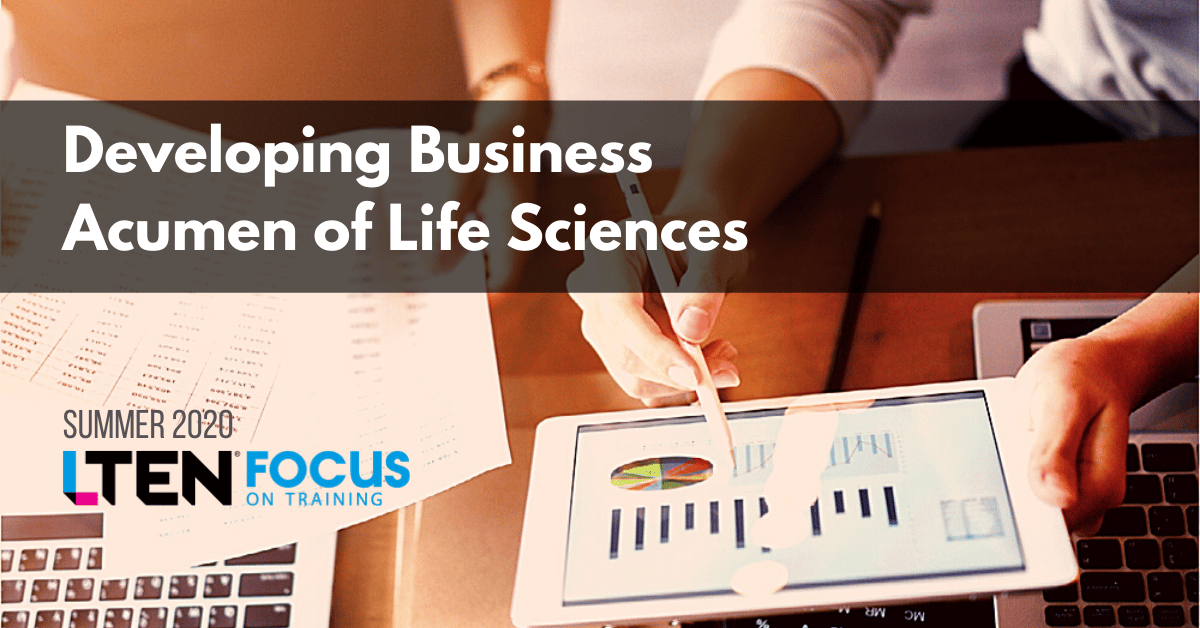The challenge for L&D is not to ‘fire hose’ employees, but to provide context.
The CEO wants employees to better demonstrate business acumen. However, business acumen is a phrase tossed around
without a common definition. Additionally, even after years of focus, learning & development (L&D) professionals struggle with how to develop this critical leadership capability.
Acumen comes from the verb “to sharpen.” It is the quickness, accuracy, and keenness of judgment or insight. Strong business acumen hinges on the ability to understand how money is made. Equally important for life sciences sales, access, and marketing professionals is the need to understand their customers’ financial and operational challenges in order to provide value and meet their needs.
The underlying skills related to business acumen include building foundational knowledge, analyzing this information by asking critical questions, and generating insights related to challenges, opportunities, and turning insights into actions that drive results.
- Knowledge. L&D must deliver a curriculum that goes beyond product and disease-state knowledge to include foundational knowledge on various channels, payer dynamics, healthcare policy, and competitor actions. Additionally, many employees do not understand financial reports. The challenge for L&D is not to “fire hose” employees with module after module Developing Business Acumen in Life Sciences about the business of healthcare, but to provide context for marketplace dynamics to providers, payers, and patients.
Analysis and Application. L&D should focus on developing analytical aptitude in order to “connect the dots” and see the big picture. It is important to provide both managers and employees with support on applying knowledge and interpreting the implications to their own organization and customers. For knowledge modules, create application exercises and coaching guides that focus on supporting employees’ ability to better uncover what is happening, understand the why behind trends and decisions, and determine what needs to happen. Application exercises must encourage individuals to test a hypothesis with others, challenge assumptions, and look to find solutions.
Generate Insights. L&D should include skill development that enhances field employees’ ability to turn insights into effective account, geography, or business plans. Employees need to uncover needs, match resources and develop solutions that will be important. An important differentiator is a process for regularly reviewing results and recalibrating plans to drive results.
When developing a business acumen curriculum:
- Incorporate emerging trends and marketplace dynamics into all offerings.
- Design application exercises where employees proactively ask leaders, peers and even customers to characterize the top marketplace changes and their impact.
- Include offerings to ensure employees can read and understand financial or other analytics to generate insights and make value-added recommendations.
Best-in-class companies realize that the dedication of time and resources to develop superior business acumen is critical to overall success. Commitment by senior leaders and the organization helps create the competitive advantage needed to excel in the changing marketplace. Leaders recognize that the greater the number of people within the organization who have an appreciation for how their own business works, the greater the accountability for driving profitability and success will be. Finally, a better understanding of how a customer’s business operates further supports the commitment to being a customer-focused organization.
Dr. Wendy Heckelman is CEO of WLH Consulting and WLH Learning Solutions.
Email Wendy at wendy@wlhconsulting.com.
